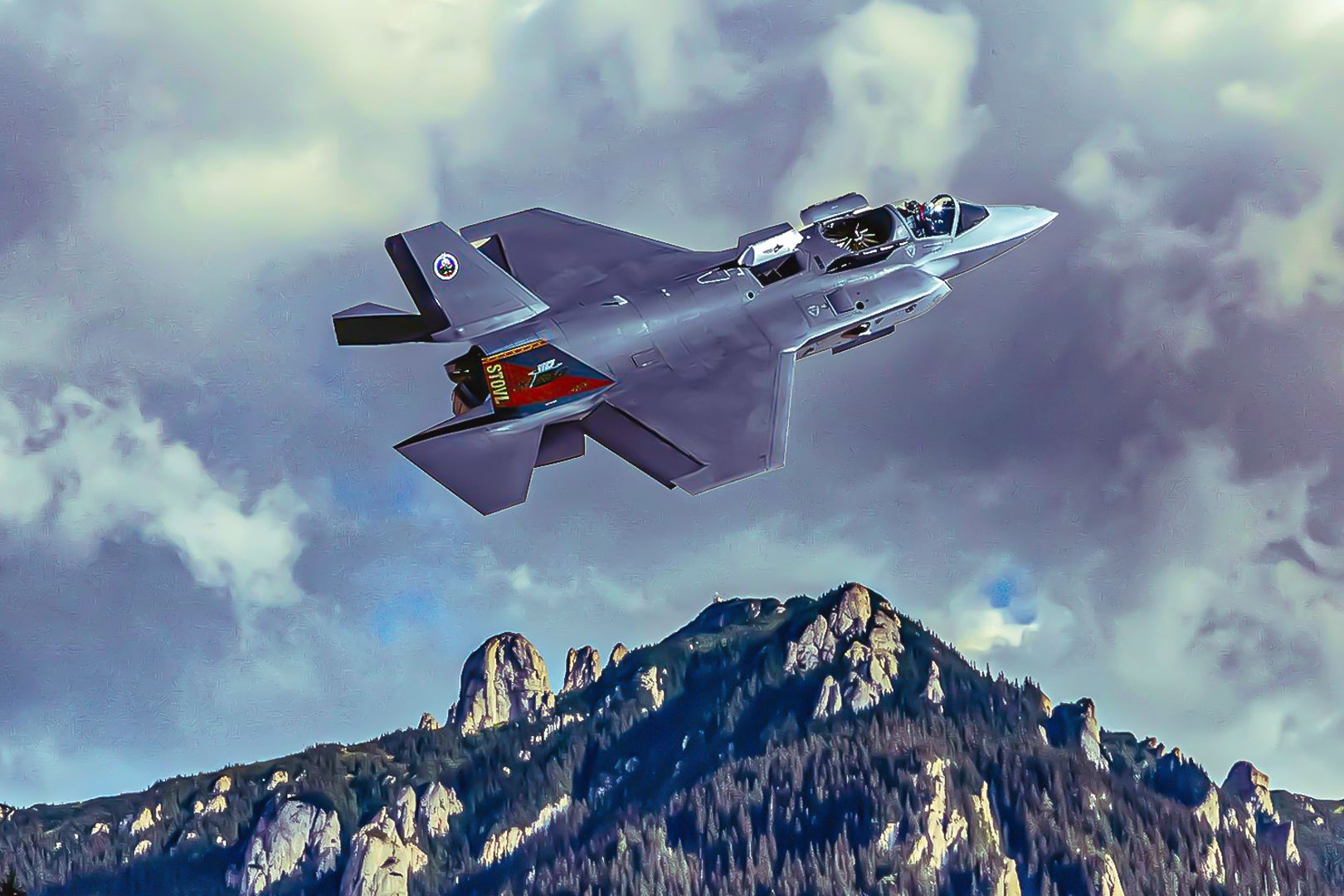Summary The F-35's Distributed Aperture System by Raytheon enhances pilots' situational awareness significantly. Both Raytheon's EODAS and Lockheed Martin's EOTS have proven successful in combat with the Israeli Air Force. Royal Australian Air Force and Israeli Air Force F-35s have performed well despite US-owned reliability issues.
The F-35 Lightning II is here to stay. As mentioned in previous articles on this fifth-generation fighter, despite all the controversies surrounding the technical foibles and expensive cost overruns that afflict US-owned F-35s, the aircraft continues to attract foreign military sales (FMS). The Israeli Air Force has used the warbird in combat with satisfactory results, and, as some Royal Australian Force (RAAF) officers recently told me: " We love them! " U.

S.-owned F-35s are notorious for their reliability issues. Yet the Royal Australian Air Force (RAAF) F-35s are performing just fine, thanks.
The F-35 has many technological capabilities that give it an edge, one of which is the Distributed Aperture System. With this in mind, let's examine how the DAS significantly boosts its pilots' situational awareness. EODAS basics: the Raytheon perspective The F-35 itself is a product of Lockheed Martin's "Skunk Works" program, the same entity (founded by the late great Clarence Leonard "Kelly" Johnson [February 27, 1910 – December 21, 1990]), which also produced the following legendary aircraft: The F-22 Rapto r The SR-71 Blackbird The U-2 "Dragon Lady" spy plane The P-38 Lightning Learn more about Skunk Works .
However, the DAS system, or more completely, the EODAS (Electro-Optical Distributed Aperture System), is the brainchild of Raytheon, specifically Raytheon's Vision Systems division in Goleta, California. It shows how well rival firms in the defense industry are willing to cooperate when doing so is mutually beneficial. Here's what Raytheon's info page on EODAS has to say: "Raytheon’s Electro-Optical Distributed Aperture System (EODAS) provides a 360-degree sensor suite for the F-35 Joint Strike Fighter program.
This advanced sensor capability gives F-35 pilots unprecedented situational awareness and survivability to operate and to navigate safely in any environment – from detecting missiles passively to circumnavigating severe weather conditions – in the Anti-Access Area Denial (A2AD) battlespace." Addressing " Advanced sensor technology ," the company adds this: "The pilot’s helmet-mounted display (HMD) brings in data from Raytheon's next-generation F-35 EODAS, which collects and sends real-time, high-resolution imagery to the HMD from six infrared cameras mounted around the aircraft. The 5th Generation F-35’s advanced sensors produce a wealth of new data ‒ electronic warfare signals, electro-optical and infrared imagery, missile warning cues and more ‒ all capable of creating new forms of intelligence, surveillance, reconnaissance (ISR) and targeting information.
" In terms of the "360-degree awareness," enabled by EODAS the company adds: "Rather than relying on frequent maneuvers to achieve full defensive threat coverage or employing a specific formation to focus on varying sectors, pilots can see the entire operating picture through one system, resulting in a significant upgrade from fixed sensors on older aircraft...
The sensors use two key components from across RTX: the strained layer super lattice (SLS) detector material (from commercial foundries) is processed using the same revolutionary manufacturing techniques to develop the GaN semiconductors in Andover, Massachusetts...
" "...
The EODAS SLS detector material is then integrated into focal plane arrays by engineers at Raytheon Vision Systems in Goleta, California. These advancements, coupled with digital pixel technology and a digital read-out integrated circuit, give pilots a quick, high-definition picture of everything around them, culminating in a more capable missile detection system." A more simplified explanation of the rewards of EODAS (or just plain "DAS" as the US Department of Defense [DOD] is content to call it) is available from the DOD's Joint Strike Fighter [JSF] page : Missile detection and tracking Launch point detection Situational awareness Infrared Search and Track System (IRST) & cueing Weapons support Day/night navigation Improved situational awareness is vital to combat aviators.
A literal split-second can make the difference between life and death, allowing pilots to get inside the enemy's OODA (Observe-Orient-Decide-Act) Loop first instead of the other way around. Lockheed Martin EOTS complements EODAS Not to be outdone, Lockheed Martin has developed its own "in-house" system, the Electro-Optical Targeting System (EOTS), which complements Raytheon's EODAS contribution. According to Lockheed Martin's official product info page : "The Electro-Optical Targeting System (EOTS) for the F-35 Lightning II is an affordable, high-performance, lightweight, multi-function system that provides precision air-to-air and air-to-surface targeting capability.
The low-drag, stealthy EOTS is integrated into the F-35 Lightning II's fuselage with a durable sapphire window and is linked to the aircraft's integrated central computer through a high-speed fiber-optic interface." EODAS and EOTS are proven in combat "The proof of the pudding is in the eating," as the saying goes. The Israeli Air Force has already used their Lightning IIs (which they have redubbed the " Adir "/אדיר, which translated to "Mighty One") in combat.
The first time was in 2018. According to Simple Flying's Alexander Mitchell , the Israeli Air Force (IAF) kept schtum about specific details of that first "blooding" of the Adir , other than a brief statement by an IAF Major General to Defense New s that: "We are the first in the world to use the F-35 in operational activity." The Israeli Air Force operates the world's most capable multirole stealth fighter.
Fast-forward to 2021, and IAF pilots would score the F-35 platform's first aerial victories, shooting down multiple Iranian drones . And in late October or early November 2023, IAF Adir drivers shot down a cruise missile that had apparently been launched by Iran-backed Houthi terrorists in Yemen . In all cases, the planes and their systems worked optimally, with the targets successfully destroyed and pilots and planes returning to be (RTB) alive, in one piece, and undamaged.
Although the IAF spokesperson made no specific mention of (EO)DAS or EOTS, it can still be reasonably inferred that these combat incidents serve as testimonials of the effectiveness of these systems. Boosting US air capabilities in the region..



















